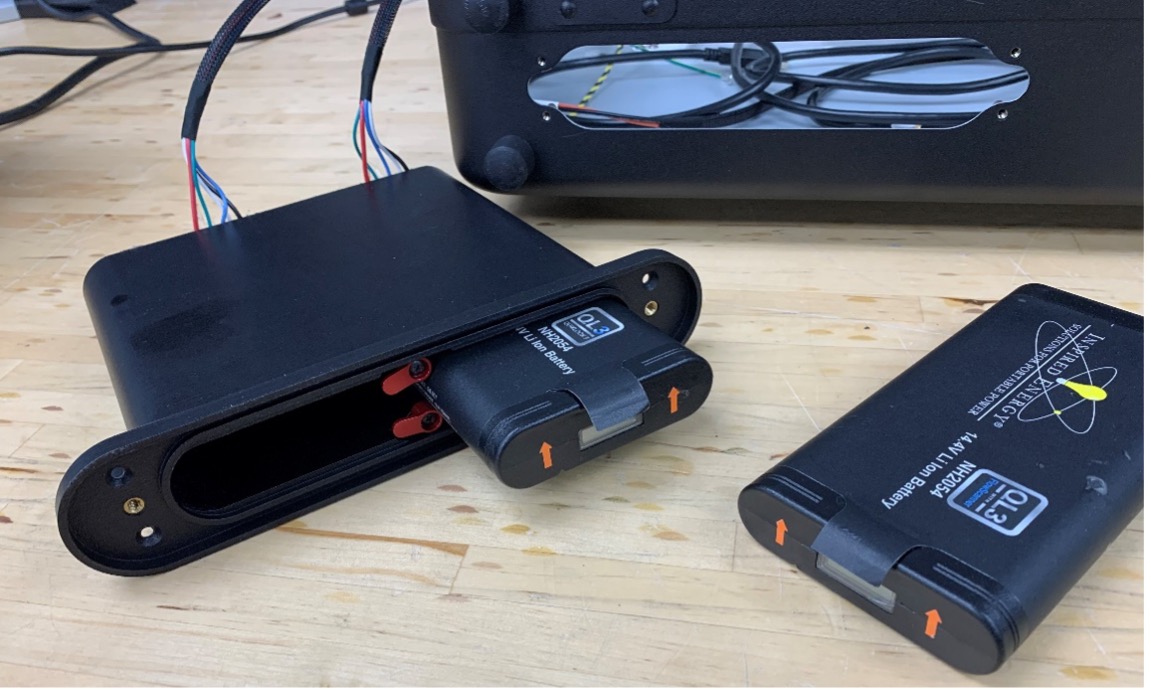Teledyne's Transition from CNC Machining to MJF 3D Printing / Additive Manufacturing
A SICAM Case Study

Mechanical design engineers know the drill: you're tasked with developing high-performance parts that meet demanding tolerances, integrate seamlessly into assemblies, and hold up under real-world stress—all while staying on budget and hitting tight deadlines.
When you're stuck between prototyping and production, the path forward isn’t always clear.
For Teledyne LeCroy Test Services, that challenge came to a head with a mission-critical battery chassis.
Here's how they navigated the shift from conventional CNC machining to additive manufacturing with the help of SICAM’s Multi-Jet Fusion (MJF) expertise.
Project Objective - Rugged Battery Chassis Production
Teledyne's primary goal was to achieve tight dimensional tolerances required for their rugged battery chassis assemblies, which are integral components within their custom test equipment used in nuclear power plants.
Traditional CNC machining of the deep pockets in these parts posed significant cost and complexity challenges.
Technical Challenge
While CNC machining was familiar and reliable, it proved slow and cost-inefficient for the design's complexity. Teledyne needed a process that offered:
- Tight tolerances
- Faster iteration cycles
- Competitive production costs
3D Printing / Additive Manufacturing was the next choice to consider–MJF emerged as the most compelling option after early testing in FDM and SLS.
Technology Selection and Solution Testing
The team at Teledyne initially tried prototyping the battery chassis using FDM and SLS technologies. SLS provided excellent mechanical strength and temperature resistance. However, it was over-engineered and more costly than necessary for the final application.
SICAM first supported Teledyne's CNC machining needs, but it quickly became apparent to SICAM engineers that 3D printing / additive manufacturing could be a better option, and recommended transitioning production to Multi-Jet Fusion (MJF).
After being introduced to MJF by SICAM, Teledyne tested PA12 parts in the field. The parts were finished with vapor smoothing and included integrated threaded inserts. The results showed comparable production costs to CNC but with much shorter lead times, better design flexibility, and excellent dimensional repeatability.
SICAM’s full-service offering reduced Teledyne's in-house workload and streamlined their workflow. MJF 3D Printing technology became the best choice for producing functional cost-effective parts with much shorter lead-times, better design flexibility, and excellent dimensional repeatability.
Why SICAM?
Teledyne first connected with SICAM through the MARN network at the New England Design-2-Part Show. They were seeking a 3D printing partner and were impressed with the professionalism and support provided by SICAM's Pete Sayki.
The relationship has continued for over a decade based on:
 Responsive support
Responsive support
 Prototyping flexibility
Prototyping flexibility
 Guidance on material selection
Guidance on material selection
 Consistent, reliable production quality
Consistent, reliable production quality
Results and Benefits
- Cost-Effective Production: MJF matched CNC pricing at mid-volumes
- Faster Iteration: Rapid design revisions and prototyping
- Design Flexibility: Integrated text, logos, and part numbers without extra cost
- Durability: No reported failures even after years in the field
- Streamlined Assembly: Threaded inserts pre-installed by SICAM
- No inventory required: OnDemand, JIT–Just-in-time Manufacturing
Parts currently in production (see gallery below):
- QL3.5 Waterproof Battery Chassis
- Stem Position Encoder (SPe) Back Shell Housing
- QLvida Battery Case
- Magnetic Beetle Sensor
- K100 Current Probe Strain Relief
Summary
Teledyne continues to evolve its product line with new sensor technologies and custom hardware. With SICAM as a trusted partner, their engineering team can rapidly prototype and transition new designs to production with confidence.
For engineers navigating the shift from prototyping to production, Teledyne’s success with SICAM and MJF is a model for what’s possible when quality, precision, and partnership come together.
"Anytime we do anything 3D printed, we go to SICAM. The quality, support, and reliability have been unbeatable."
— J. Haglund, Engineering Manager of Design, Teledyne Test Services
716